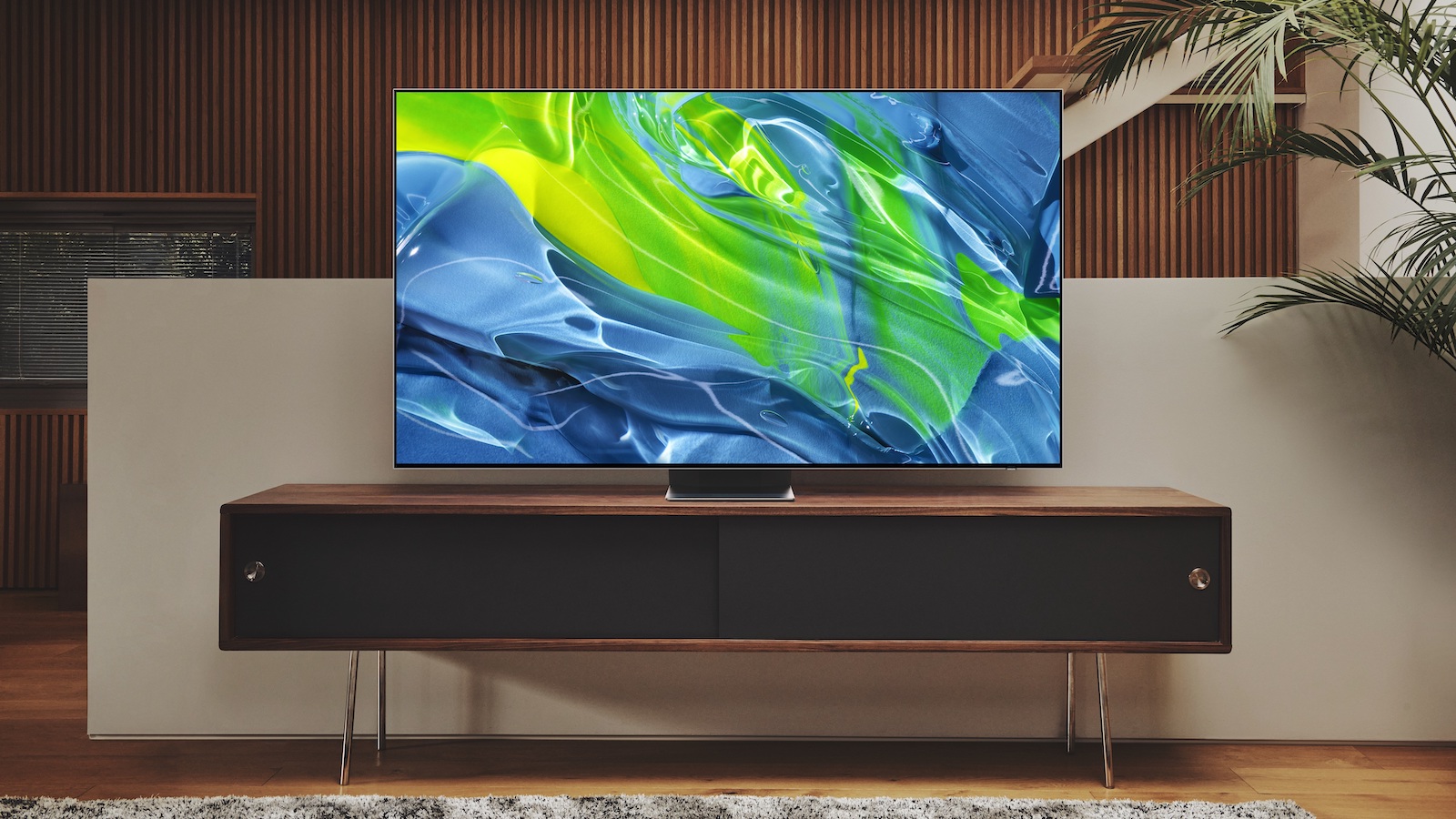Samsung's S95B QD-OLED TV finally has a release date and price, but where's the 'QD' bit?
Another fail in the marketing tale of Samsung's first OLED TV

Samsung's QD-OLED TV is finally official. What's more, it now has a name (S95B), a rough release date that's earlier than expected and a price that's lower than expected. This should be cause for excitement and celebration, but Samsung has made yet another baffling decision in its marketing.
Before we get to that, though, here's the good stuff: the Samsung S95B QD-OLED TV will be available from April, priced at just $2200 for the 55-inch model and $3000 for the 65-incher. Those prices are from Samsung's US website which, for the record, originally listed pries of $2400 and $3500. The S95B is yet to appear on the UK or Australian Samsung sites, though we're told that pre-orders in the UK at least will be opening 'soon'.
The S95B looks lovely in pictures, with a very thin panel section and with a fairly minimalist electronics enclosure that takes the overall depth measurement (without the stand) to just 1.6 inches (4cm).
Unlike most of Samsung's 4K QLED TVs, the S95B QD-OLED boasts four HDMI 2.1 sockets that support 4K/120Hz signals from next-gen consoles and high-end PCs.
That's all exciting stuff, but the most thrilling thing about the Samsung S95B is that it's a groundbreaking product. A TV designed to combine the best elements of OLED with the best elements of QLED to form a next-gen hybrid television. A QD-OLED.
But here's the thing: Samsung isn't marketing the S95B as a 'QD-OLED'. It's referring to it simply as an 'OLED'. In fact, in none of the marketing is there any mention of Quantum Dots. Establishing that this is, in fact, a QD-OLED and not a standard OLED involves digging deep into the specs on Samsung's US website to find this slightly mysterious phrase: '100% Colour Volume with Quantum Dot'.
Well, consider my flabber well and truly gasted. Why would a company come up with a TV featuring brand new panel technology and then go out of its way to make it look as if it's nothing new at all?
The latest hi-fi, home cinema and tech news, reviews, buying advice and deals, direct to your inbox.
OLED has been around for ages now, and every TV brand worth its salt already has OLED models in its range. Samsung has added something genuinely new and innovative to the OLED formula in the form of Quantum Dots, which should improve colour reproduction and brightness, but now appears to be going out of its way to hide that fact.
It's an especially peculiar decision when you consider that reports last year suggested that Samsung was actually planning to omit the 'OLED' portion of the 'QD-OLED' monicker in order to distance its new panel technology from standard OLED, which it's been campaigning against for years. That would have been very petty, but at least it would have made a weird sort of sense. To omit the 'QD' bit? The differentiating bit? The exciting bit? That's just odd.
So what's going on here? There's no way to be sure, but it rather seems as if Samsung simply doesn't know what to do with its new QD-OLED TV. 2021 was packed with rumours of protracted negotiations between Samsung Display (which manufactures the panels) and Samsung Electronics (which builds and sells the actual TV sets), and so far this year we've seen the S95B being given a CES Innovation Award and being leaked by an authorised retailer but left off all of Samsung's own press releases. Meanwhile, reports of production issues and disagreements between Samsung Display and Samsung Electronics have persisted.
To top it all off, today's press release from Samsung, which finally officially announces the S95B, gives it third and final billing below not only the company's new 8K QLEDs but also the new versions of its Frame and Serif 'Lifestyle' models. What's more, said press release barely alludes to the ground-breaking nature of the TV. That's no way to treat what should be one of the most exciting television launches of the year. It's almost as if Samsung is embarrassed of the S95B.
The long, potholed road to the S95B's launch makes you wonder whether it's actually going to be any good. We certainly think it could and should be, as Sony's A95K, which also features a QD-OLED panel manufactured by none other than Samsung Display, looked excellent when we recently saw it in action. So far, though, Samsung is making all the wrong noises.
MORE:
What's all the fuss about? QD-OLED explained
We've been hands-on with the Sony A95K QD-OLED
Here's the full 2022 Samsung TV lineup
Tom Parsons has been writing about TV, AV and hi-fi products (not to mention plenty of other 'gadgets' and even cars) for over 15 years. He began his career as What Hi-Fi?'s Staff Writer and is now the TV and AV Editor. In between, he worked as Reviews Editor and then Deputy Editor at Stuff, and over the years has had his work featured in publications such as T3, The Telegraph and Louder. He's also appeared on BBC News, BBC World Service, BBC Radio 4 and Sky Swipe. In his spare time Tom is a runner and gamer.

